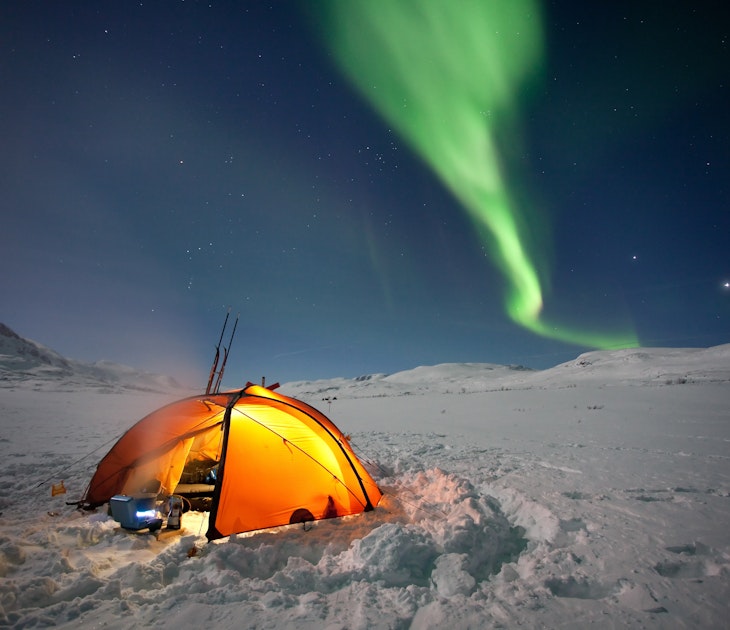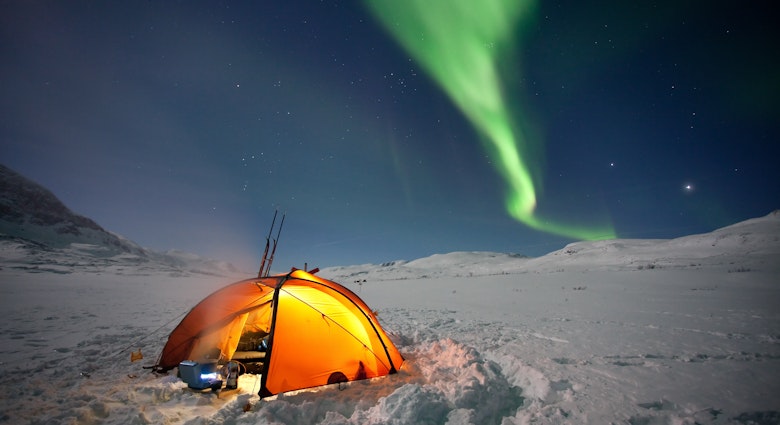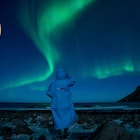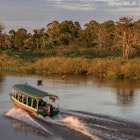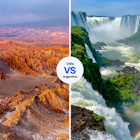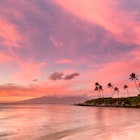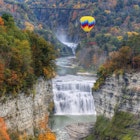You don’t have to believe in Father Christmas to have a magical December. Mother Nature has an abundance of gifts for those willing to look for them. Some will be found in the usual places – beneath trees and near the North Pole – while other locations are less conventional, but equally enchanting.
Find shimmering skies, dazzling beaches and otherworldly wildlife with our selection of outdoorsy December adventures.
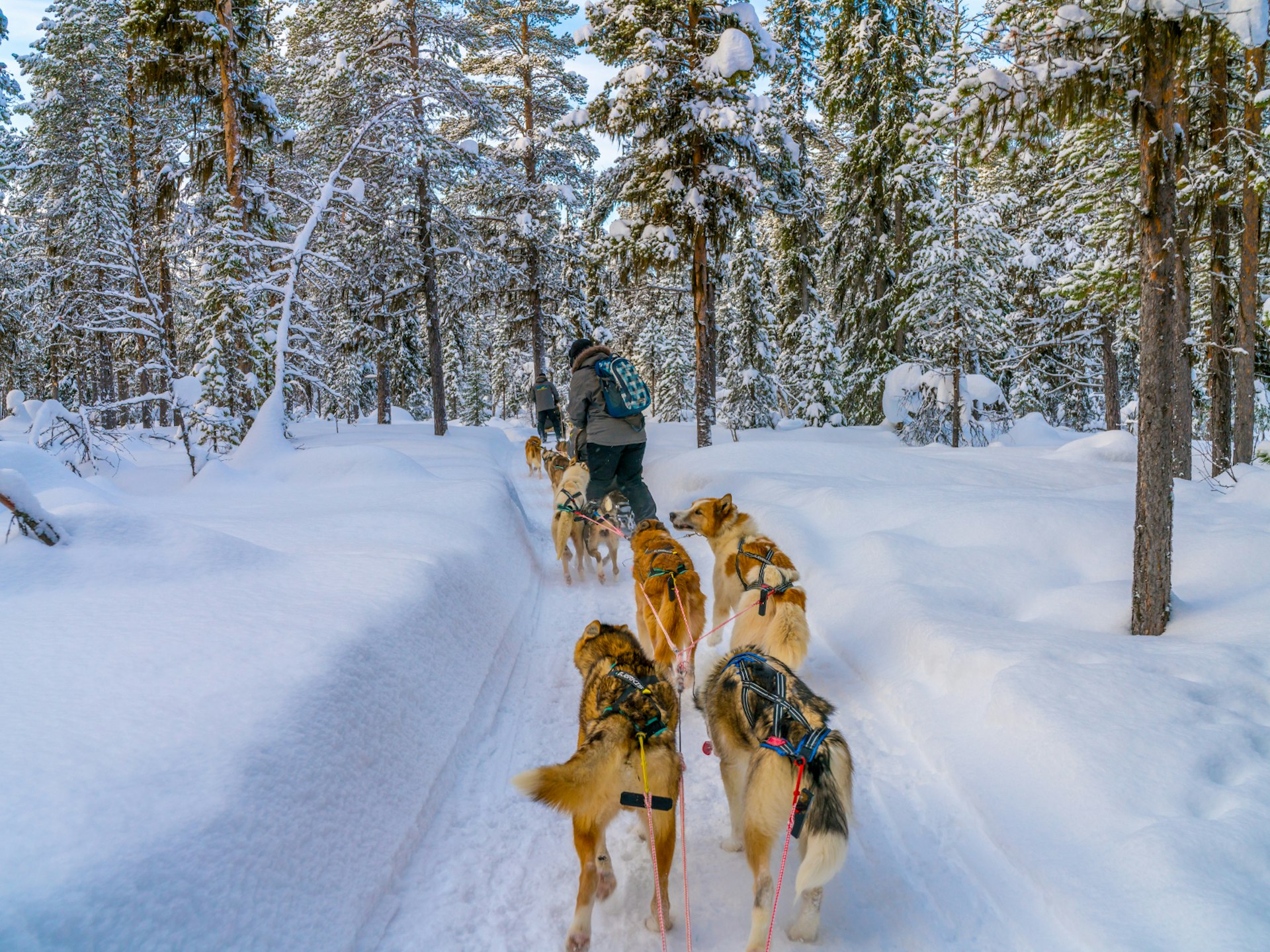
Bed down amid ice sculptures beneath the enthralling Northern Lights in Sweden
At the Swedish village of Jukkasjärvi, one degree of latitude north of the Arctic Circle, in the last three weeks of the year the sun never rises. In December, darkness is the dominant state – perfect for watching the swirling light show of the aurora borealis in sable skies. Jukkasjärvi is the home of the original Icehotel, carved anew each year from the pristine waters of the Torne River, and a base for cross-country skiing, husky sledding, snowmobiling, meeting reindeer and learning about traditional Sámi culture – magical for kids and grown-ups alike. Some 60 miles (97 km) to the northwest, Abisko National Park is even further removed from the light, an otherworldly landscape offering arguably the world’s best aurora-watching – head to the top of 2953 ft (900m) Mt Nuolja for spectacular views of light and land.
- Trip plan: Kiruna, 10 miles (16 km; 20- minute drive) west of Jukkasjärvi, has flights from Stockholm and international cities. Trains from Kiruna to Abisko take an hour.
- Need to know: The Northern Lights are sparked when charged particles from the sun hit the Earth’s atmosphere. Various websites offer forecasts based on solar activity.
- Other months: Dec-Apr – winter, Icehotel’s ice rooms open; May & Sep – shoulder, many facilities closed; Jun-Aug – summer (late May–mid-Jul: midnight sun); Oct-Nov – good aurora-watching.

See red and yellow and blue at Tambopata’s macaw clay licks in Peru
Watching wildlife in the Amazon rainforest can be tremendous – the diversity and density of species is unrivalled. But it can also be frustrating, thanks to the thick jungle. Except at a collpa, or clay lick, where the Amazon’s most dazzling birds gather in huge numbers. Collpa Colorado in Peru’s Tambopata National Reserve is reputedly the world’s biggest: hundreds of technicolour macaws and parrots gather early each morning to munch the mineral-rich clay. December, early in the rains and peak breeding season for many species, sees numbers of vivid blue-and-yellow and scarlet macaws soar at the collpa. Tapir, giant otter and jaguar also roam the reserve, as do harpy eagles, the prehistoric-looking hoatzin or ‘stink bird’, and dozens of reptiles and amphibians, more easily spotted in the cooler wet season, when tourist numbers are lower.
- Trip plan: Fly to Puerto Maldonado, from where multi-day tours and lodges of various levels of luxury offer wildlife-watching opportunities along the Tambopata and Madre de Dios rivers, with trips to the Collpa de Guacamayos Colorado or other clay licks.
- Need to know: Expect heavy rain in the afternoon – and bring insect repellent!
- Other months: Jun-Aug – dry in highlands and rainforest, busy; Apr-May & Sep-Nov – shoulder, fairly dry; Dec-Mar – wet season.
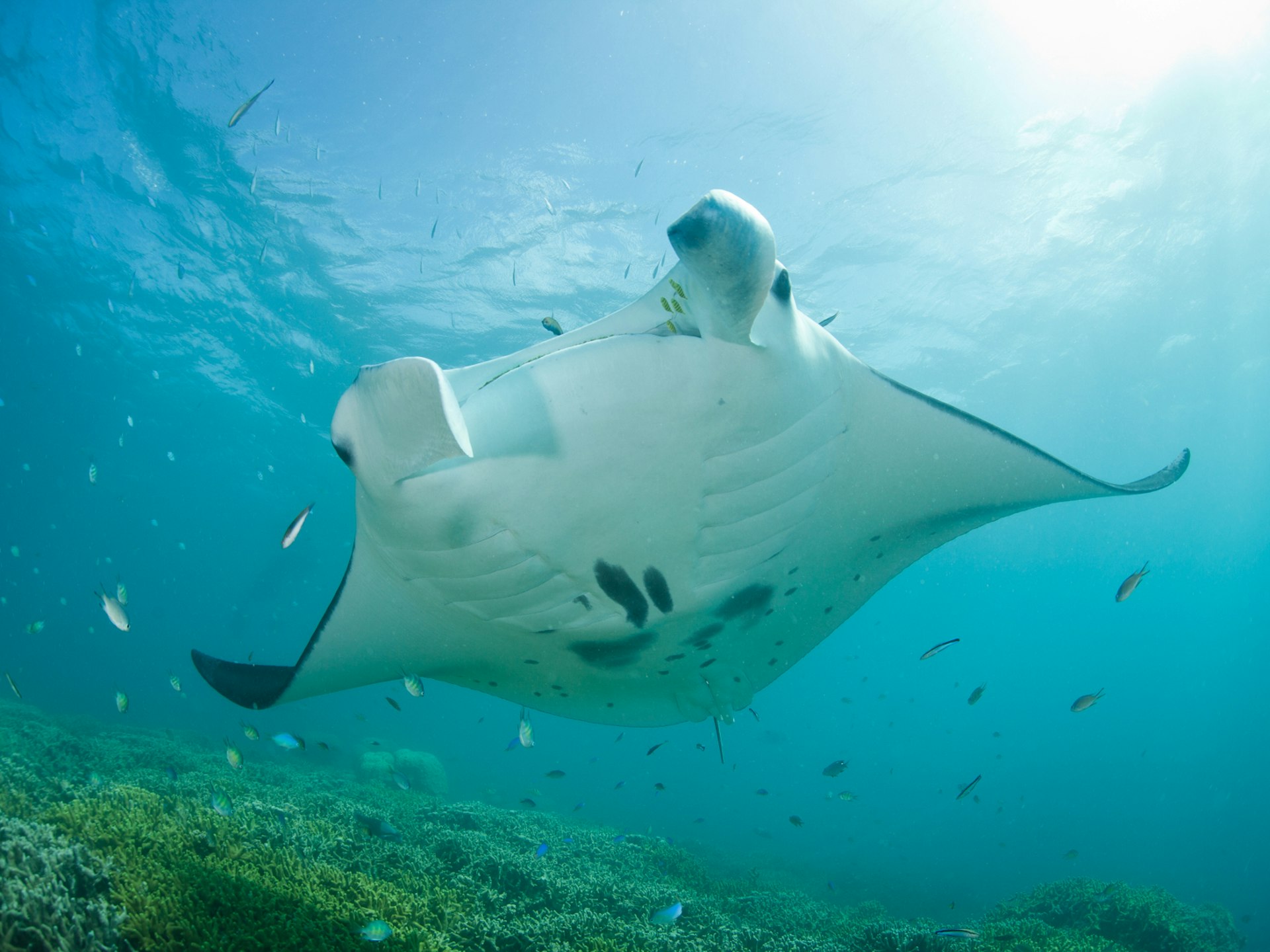
Head to Micronesia to watch mighty manta rays in mating season
Most people, it’s fair to say, have never heard of Yap, Chuuk, Pohnpei or Kosrae – and those who have would struggle to find them on a map. These are the four Federated States of Micronesia (FSM), 607 Pacific islands. Between their traditional cultures, tropical beaches and stupendous snorkelling and diving, they offer the best holiday you never thought of. December brings lower humidity and rainfall to many parts (though it’s rarely completely dry), but for divers it has another huge attraction: the mating season of giant manta rays, with wingspans stretching 5m and more. From December these aquatic behemoths get frisky, males chasing females through the submarine channels of Yap. On land, it’s the cash that’s massive – huge stone coins still used to bank money. There’s more great diving off Kosrae and among the wrecks of Chuuk lagoon; on Pohnpei you can kayak among the mysterious ruins of Nan Madol.
- Trip plan: Flights link Kosrae, Pohnpei, Chuuk, and Yap via Guam. Take two weeks to visit all four; in one you could dive Yap and Chuuk.
- Need to know: FSM spans two time zones: GMT+10 in Yap and Chuuk; GMT+11 in Pohnpei and Kosrae.
- Other months: Dec-Mar – rainfall and humidity lowest; Apr-Nov – wetter.
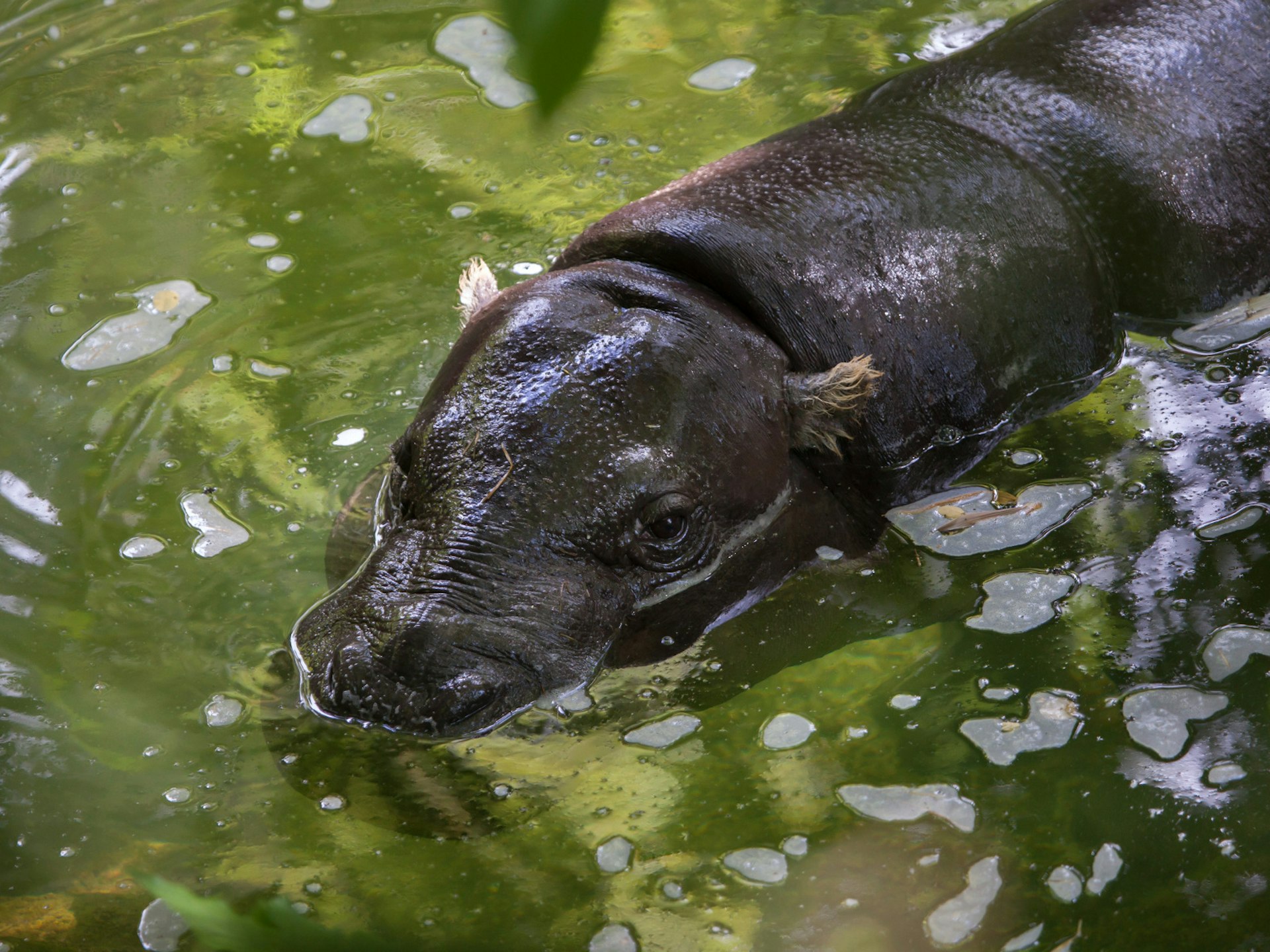
Lounge on palm-fringed beaches and spot rare wildlife in Sierra Leone
Like its diamonds, so bitterly contested in the 1990s, Sierra Leone is a jewel in the rough. But the sparkle is clear: the beautiful white-sand beaches that lured international holidaymakers in the 1970s are still as lovely, the slavery-era heritage as fascinating, and the pockets of biodiversity as captivating as ever. The warm, dry days of December are ideal for both beach-lounging and exploring, and are an excellent time for spotting the country’s dazzling birdlife – David Attenborough came here to film his first-ever nature documentary, about his quest for a rare rockfowl.
- Trip plan: Wander the colourful streets of capital Freetown, visiting the bathung, 500-year-old Cotton Tree where slaves were once sold, the white-sand beach at River No 2, nearby Tacugama Chimp Sanctuary and the remains of the fort on Bunce Island. Then head east to Tiwai Island in the Moa River, where you might spot chimps, red colobus and Diana monkeys, and – if you’re lucky – pygmy hippos. Further east, Gola Rainforest National Park harbours rare bird and mammal species.
- Need to know: Though a friendly, largely safe destination, check your government’s travel advice before visiting Sierra Leone.
- Other months: May-Oct – rainy (Jul-Aug: wettest); Nov-Apr – very hot, dry, windy.
Looking for more inspiration? Check out our book Where To Go When for 360 ultimate escapes from family-friendly adventures to animal encounters and relaxing retreats.
http://shop.lonelyplanet.com/world/where-to-go-when-1/

